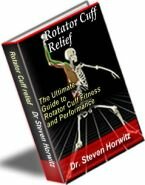Ice and Heat: How to Use
No matter how many times I say it, and I've been saying it for 20 years, if you have an "ouch" use ICE! Ice initially constricts the blood vessels and decreases tissue temperature. Ice decreases swelling, tissue damage, inflammation, muscle spasm, and pain. For new injuries (acute), use ice. As long as the injured area is swollen and/or painful, use ice. If you have a chronic injury and you have exercised that area during the day, use ice. For example, if you have arthritic knees and have gardened, cleaned house, gone for a run, or played ball, use ice immediately after the activity. If you cannot immediately ice the area, ice it several hours later - it still will work! Ice is a great exercise recovery tool.
There are three basic methods of icing:
Ice bag or ice pack: Use ice cubes in a bag, a bag of frozen peas, or a refreezeable icepack for 15-20 minutes on the injured area. Place a thin towel between the skin and ice pack. There are newer ice packs which have a soft outer lining which may be placed against the skin safely (we have these available at our office). Wait one hour before using the ice pack again.
Ice massage: Freeze water in a Styrofoam cup. Use the ice directly on the skin by tearing the edges of the cup exposing the ice. A reusable plastic ice cup is available at our office. Using a gentle, continuous, circular motion rub the ice over the problem area for 5 minutes. During treatment with ice massage, you will feel the following stages: Cold, Burning, Aching, Numbness. Stop icing when you first feel the numbness. Wait one hour before repeating.
Please note that with pre-adolescent children (under the age of eight) do not apply ice directly to the skin without using a wet paper towel barrier as their skin may be too delicate to handle the cold. As for adolescents and adults, except for the forehead and elbow regions, ice can be applied directly to the skin unless there are known allergies or skin conditions (such as previous frostbite or Raynaud's Syndrome) that will not allow you to do so.
If ice packs are put directly on the skin and left too long, frostbite may occur. The skin and tissue underneath (muscles, nerves, and fat) may be injured, either temporarily or permanently. Certain parts of the body (the elbow, outside of the knee, and outside of the foot) can be injured by cold more easily because they do not have as much padding or insulation.
Ice Bath: Immerse the part (ideal for hands or feet) in a bucket of water then add ice. Immerse area for 5-10 minutes (20 minutes maximum). Athletes training hard in the summer will find this a very effective recovery tool.
A fourth and extremely effective method of icing is to use a product called a Cryocuff. This is a small cooler with a hose attachment which connects to a cuff made for the injured body area. The beauty of this type of cryotherapy (ice therapy) is the simultaneous application of cold and compression. This device is a MUST for post-surgical care (arthroscopic surgery) and is incredibly effective at reducing swelling. Ask us for more information about the cryocuff.
Cold sprays are another form of cold treatment, but one that only lasts for a few moments. Cold sprays are only intended to last up to thirty to forty-five seconds, long enough to take the "sting" out of a bruise but not meant to replace the necessary cold treatment that ice provides.
Several precautions about using cold sprays should be noted prior to use. Since cold sprays are either made from butane, ethyl chloride or fluromethane, all of which are explosive chemicals, use them with caution. These are compressed gases that can explode if handled improperly, overheated (such as leaving a can in the hot car) or dropped repeatedly. These cold sprays can also cause terrible skin irritation and burns if used improperly. Make sure you read all of the instructions before use and never use in place of traditional ice treatments for an injury. Note: Some forms of cold spray (such as fluromethane) have been linked with cancer-causing carcinogens.
If an injury is no longer swollen and painful and is simply stiff or sore, you can try MOIST heat on the area. Heat dilates or expands local blood vessels to bring blood to the treated area. Heat will decrease pain, muscle spasm, and promote healing. Heat treatments should be used for chronic conditions to help relax and loosen tissues, and to stimulate blood flow to the area. Use heat treatments on chronic conditions, such as overuse injuries, before participating in activities. Do not use heat treatments after activity and do not use heat after an acute injury.
There are various heat methods that can be used to treat injuries. These include electronic blankets and mitts, heating pads, hot baths or showers, hot packs, hot towels, hot tubs, heated pools, and paraffin wax.
The best methods for using heat are:
Moist heat pad: The best moist heat pad is called a hydrocollator (what we use in the office). The problem for home use is that unless they are stored in water, the hydrocollator pack will crack. Look for a product that specifically says moist heat. If you plug it into an outlet, BE CAREFUL! Avoid direct skin contact by placing a towel on the skin first. Apply heat for 15-20 minutes at a time every two to three hours. Never leave heating pads or towels on for extended periods or while sleeping. Yes, one patient actually did come in with second degree burns because he fell asleep at home with a dry heating pad on his back! Also, do not combined heat with creams or rubs without professional advice. Be very careful because the heat open the pores in the skin and the rubs will penetrate more.
Hot tub: This is a great overall muscle relaxation method. Do not stay in a hot tub for more than 15-20 minutes. I do not recommend the use of public hot tubs because of the possibility of bacterial infection. Do not exceed 104° F. Water temperatures over 110ºF have caused a number of deaths. Do not drink alcohol before, during, or after using a hot tub. Be very careful if you are pregnant. (http://health.yahoo.com/ency/healthwise/tn9082)
Paraffin Wax: The use of hot wax, especially on the hands and feet, can be wonderfully restorative for arthritic conditions. Waxes with essential oils added can be even better. Studies have shown that paraffin can improve mobility, stiffness, and skin elasticity. We have a paraffin bath in the office. http://www.ncbi.nlm.nih.gov/entrez/query.fcgi?cmd=Retrieve&db=PubMed&list_uids=15371046&dopt=Abstract
Both ice and heat can be very effective when treating mild injuries, but only if they're used in the correct way. If in doubt, do not hesitate to contact us with any questions. If any of the aforementioned procedures aggravate your condition, stop and consult us promptly.
| The Ultimate Nutritional Lie Detector Test LEARN MORE  |
Kettlebell Rehab

Click Here
To See How Kettlebells will transform your body!
Vortex Rehab

Click Here
To See How This
Revolutionary Machine
Can Help You!
Partner / Support

Loans up to 3 months - fast cash advances for up to 90 days and up to $5,000!


















